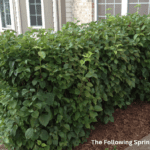Winter might seem like a time of dormancy in the garden, but it’s actually the perfect time to give your trees and shrubs some much-needed attention. While the idea of pruning in the cold might seem counterintuitive, there are several key advantages to tackling this task during the winter months. Let’s explore why winter pruning is beneficial and how to do it right.
Why Winter Pruning is a Winner
Think of your trees and shrubs like athletes. During the growing season, they’re in full performance mode, expending energy on new growth, flowering, and fruiting. Winter, on the other hand, is their rest period. Pruning during this dormant season offers several benefits:
- Reduced Stress: With growth slowed down, plants experience less stress from pruning cuts. They’re not actively pushing sap to heal wounds, minimizing the impact of trimming.
- Spring Growth Boost: Pruning in winter encourages vigorous new growth come springtime. By removing excess or poorly positioned branches, you direct the plant’s energy towards producing healthy, robust growth in the desired areas.
- Disease & Pest Prevention: Many diseases and pests are dormant during winter, reducing the risk of infection after pruning. This helps keep your plants healthy and strong.
- Structural Clarity: Without leaves obscuring the branches, winter pruning allows you to clearly see the structure of the tree or shrub. This makes it easier to identify areas that need attention, such as crossing branches, deadwood, or weak points.
Winter Pruning Techniques: Getting it Right
Before you grab your pruning shears, it’s essential to understand the right techniques:
- Clean Cuts are Key: Always use sharp, clean pruning tools to make smooth cuts. This minimizes the risk of disease and promotes faster healing.
- Know Your Plant: Different trees and shrubs have different pruning requirements. Research the specific needs of your plants before you start pruning. Some plants bloom on old wood (growth from the previous year), while others bloom on new wood (current season’s growth). Knowing this will determine when and how you should prune.
- Safety First: Wear appropriate safety gear, including gloves and eye protection. If you’re dealing with large branches or heights, consider hiring a professional arborist.
- Pruning for Specific Goals: Are you trying to shape a tree, remove deadwood, or improve airflow? Understanding your goals will guide your pruning decisions.
What to Prune in Winter:
Winter is the ideal time to prune most deciduous trees and shrubs (those that lose their leaves in the fall). This includes:
- Deciduous trees (e.g., maple, oak, apple)
- Deciduous shrubs (e.g., hydrangea, lilac)
- Evergreens (light pruning only)
When NOT to Prune in Winter:
Avoid pruning certain plants in winter, such as:
- Spring-flowering shrubs that bloom on old wood (e.g., forsythia, azalea) – prune these after they flower in spring.
- Evergreens during extreme cold snaps.
Ready to Get Started?
Winter pruning can be a rewarding way to care for your trees and shrubs, setting them up for a healthy and vibrant growing season. If you’re unsure about how to prune your specific plants or prefer to leave it to the professionals, CPHort is here to help!




